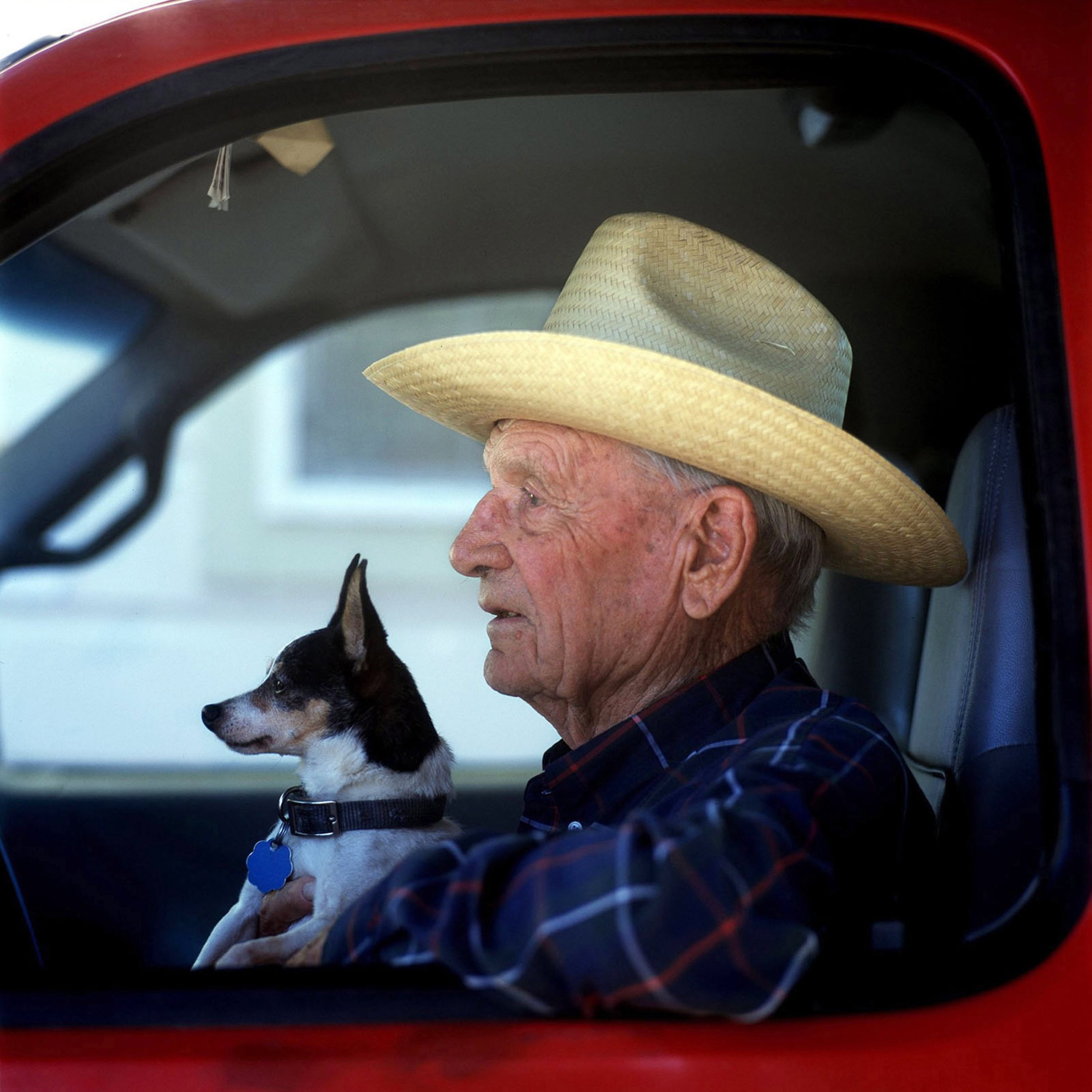
Louis J. Foppiano, President of Foppiano Vineyards in Healdsburg, California. The Foppiano Vineyard was established in 1896 by Giovanni Foppiano, a native of Genoa, Italy.
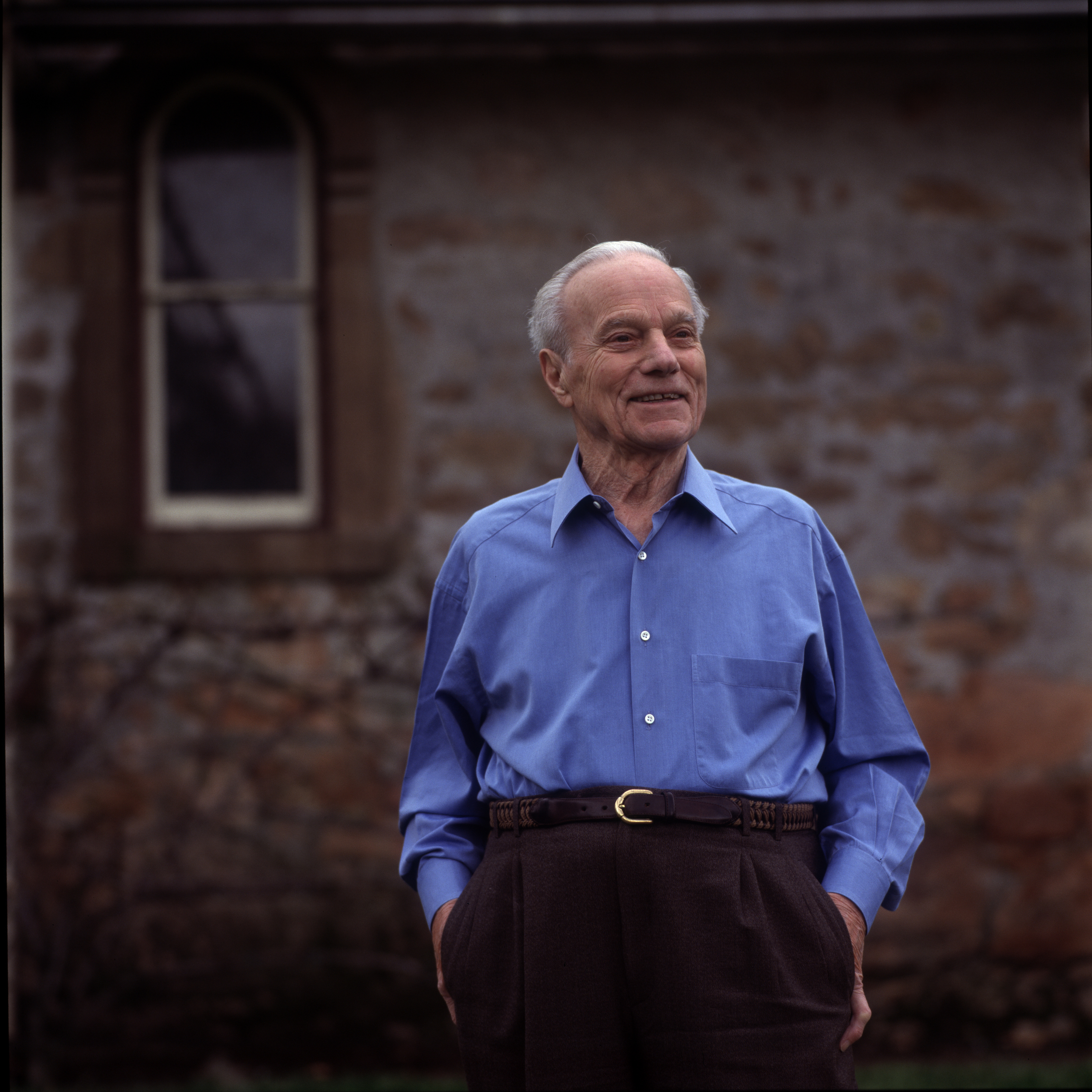
Peter Mondavi is the quiet one, keeping a low profile on the family's historic estate, the Charles Krug Winery at St. Helena, dating from 1861. It was acquired by their father, Cesare Mondavi, in 1943, and taken over solely by the Peter Mondavi family in 1966. Peter is an innovative and proud man who pioneered a number of important winemaking techniques in California
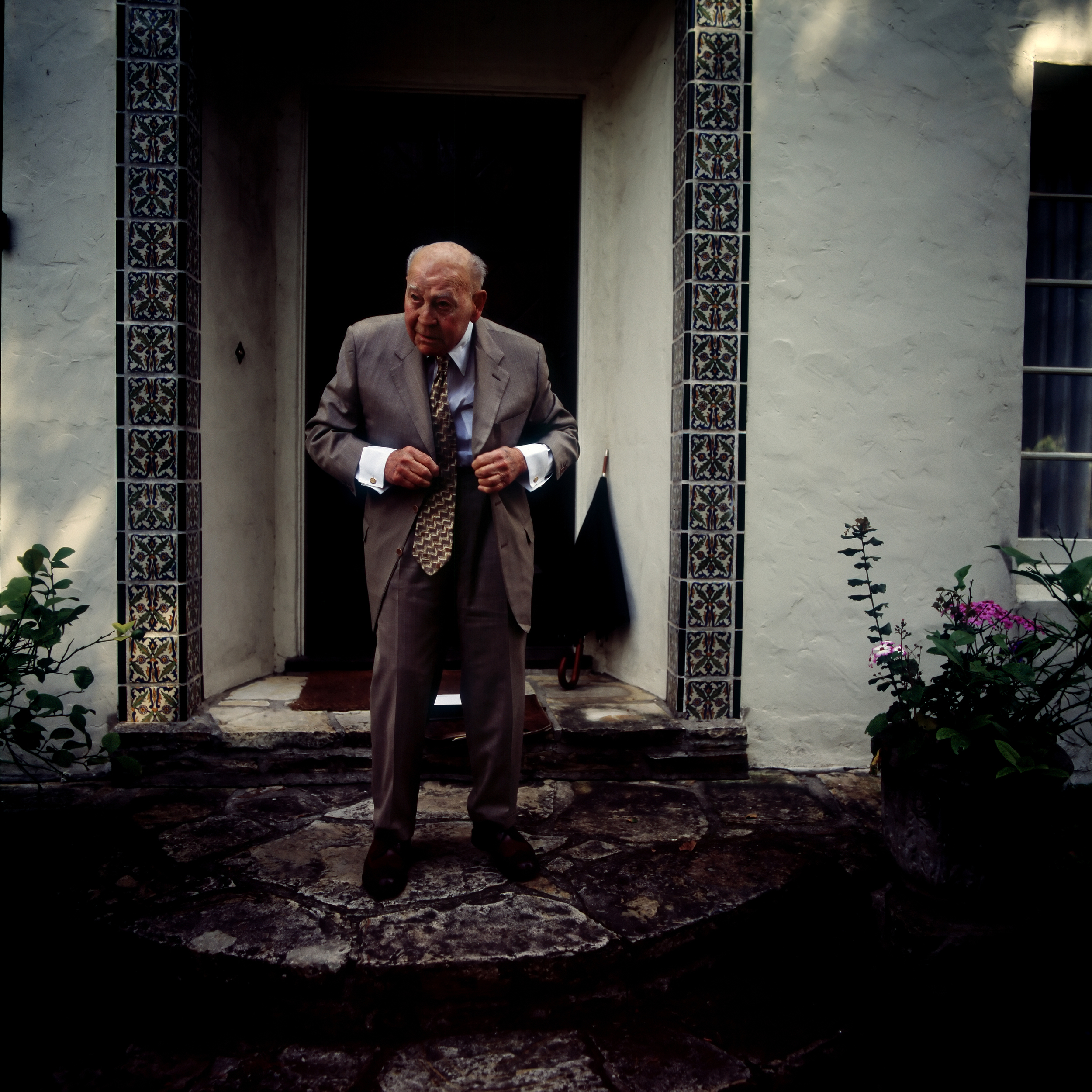
Mario Perelli-Monetti, age 93, and lives in Hillbourgh, California. At one time his family owned the largest winery in Central Valley. Minetti no longer has a winery, but still produces wine under the Minetti lable. Mario gathers himself outside his home in the Bay Area before making his way to Tiberon to meet with a client. The Perelli-Minetti family name is over eight hundred years old. The family has been in the business of making fine wine since the early fifteen hundreds. Mario's father, Antonio Perelli-Minetti, first came to America in 1902. From 1902 until his death in 1976, Antonio was active in viticulture and winemaking throughout California and Mexico, and became one of California's top wine producers. Born at his father's winery in Somona County, Mario worked from boyhood at his family's vineyards and wineries. He became an attorney but later gave up a successful law practice to return to the family business of wine because, as he puts it, "It was in my blood."
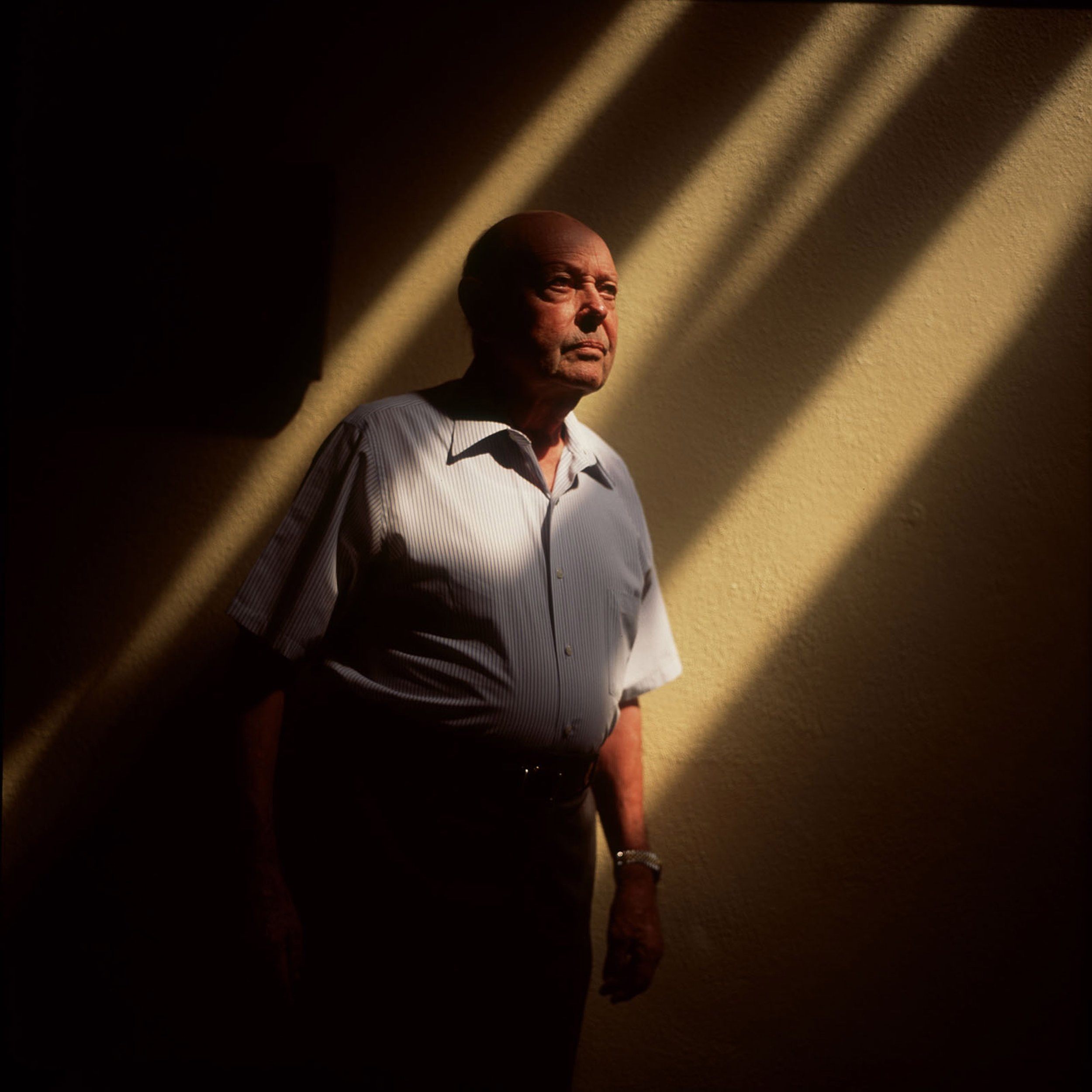
84-year-old Santo Riboli recalled a time when dozens of wineries lined the Los Angeles River and dotted the nearby Lincoln Heights neighborhood. Riboli Winery is the last surviving.

Harold P. Olmo's post-Prohibition viticultural research centered on identifing unidentified grape vines. In the years that followed, Olmo came to be highly reguarded for breeding and developing improved grape varieties for both table and wine use.

Al Cribari, born October 13, 1920 in San Francisco, California. His father Benjamin Cribari immigrated from Italy, worked for the Canadian Pacific Railway. When reaching California, he purchased property in Morgan Hill in 1904. Al Cribari became part of the wine business by default. Benjamin never learned to speak english, he always asked Al for advice and help with the scientific side of grape growing and wine making. Business was good to Cribari during Prohibition. The family had the means to export their grapes to the east coast to sell. Grapes sold for a good price until the depression in 1932.
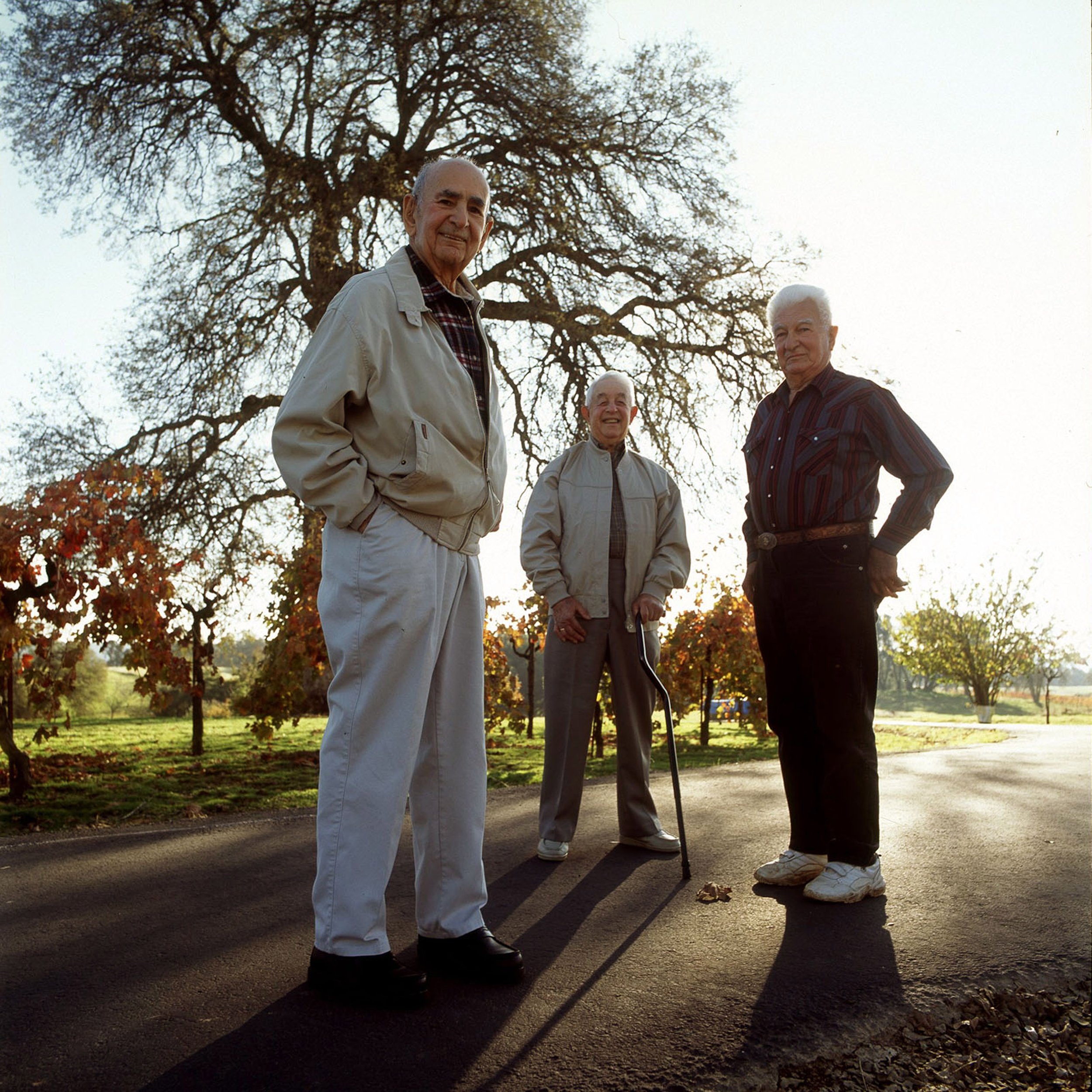
(L-R) Tulio, Michele, and Armenio D'Agostini were born and raised in Plymouth, California. The family owned and ran the D'Agostini Winery until it was sold in 1985.

John Parducci, age 87. In 1921, John’s father, Adoph Parducci, bought a Mendocino vineyard and sold grapes to home winemakers. After the end of Prohibition in 1932, he and his father built Parducci Wine Cellars, Mendocino’s first winery. Parducci took over the Parducci Wine Cellars from his father in 1960, and then sold the majority stake in the business to California Teacher's Association Pension Fund in 1972.
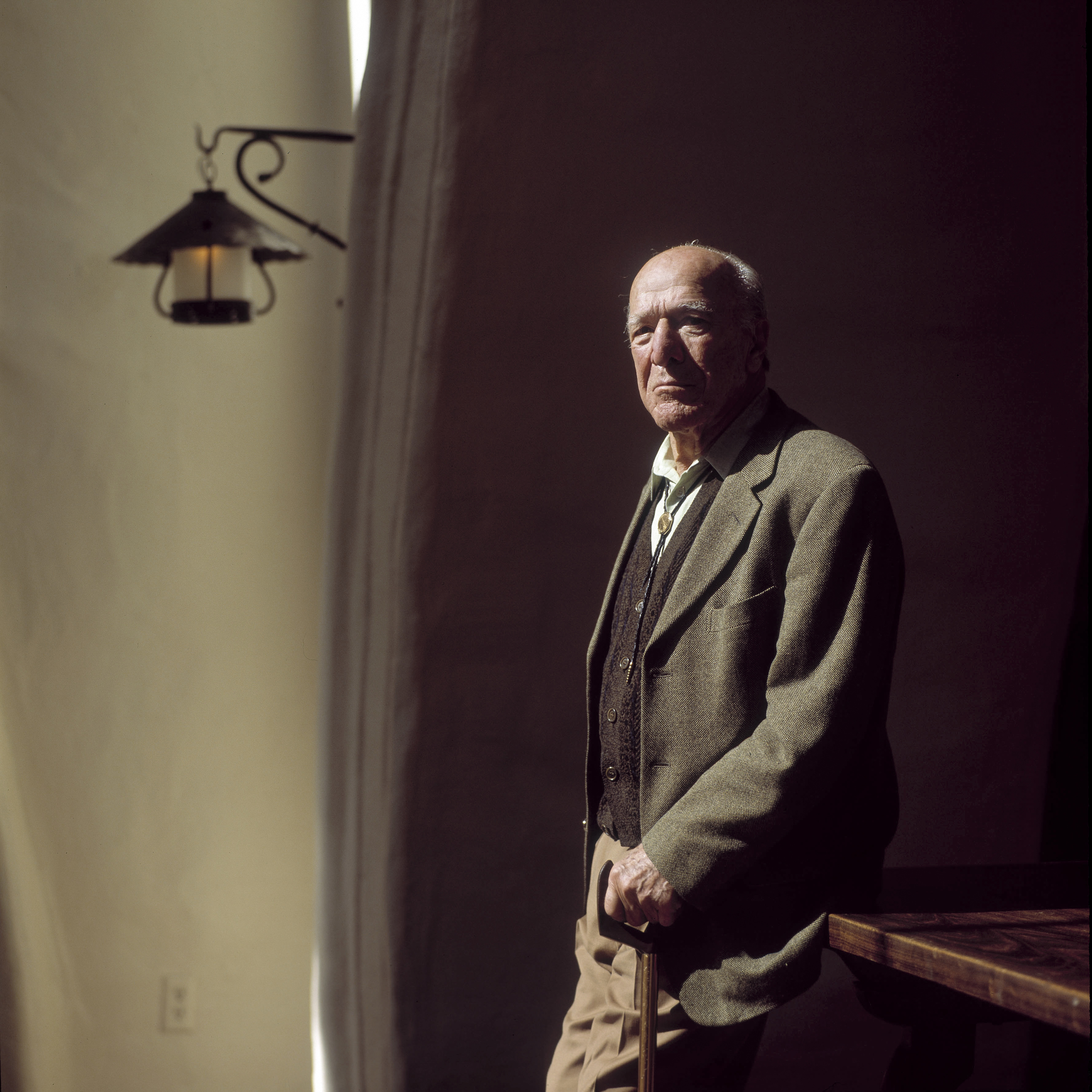
Born June 18,1913 -- Robert Mondavi, at his winery in Oakville, California on April 14, 2005. When asked to reflect on his career journey in the wine industry, "It has materialized beyond my expectations, I am very pleased. I don't know what else I can say."

Jim Concannon of Concannon Winery in Livermore, California. The Concannon's were able to continue to make wine during Prohibition because of the agreement with the Catholic Diocese to make wine for the church.

John A. Ferrero, born in 1917 lives in the home he was born in Plymouth, California. Ferrero's family has been growing wine grapes in Amador Valley for 100 years.

Eugene Cuneo, born October 10, 1912. Cuneo was 7 years old when Prohibition was implimented. His father and uncle saved the vineyard by bootlegging. Both were caught and jailed for three months in Santa Rosa. The family struggled but stayed afloat from 1947-1970. In 1972 prices of wine grapes increased through the populatity of California wine. Cuneo looks over the vineyard from the porch of the home he lives and was born in.

Eugenio Pio "Pete" Seghesio died peacefully, surrounded by his family, at Santa Rosa Memorial Hospital on Sept. 30th at the age of 85. He was a pioneer in Sonoma County’s wine industry, in a career spanning more than 60 years. Born on April 27th, 1919, Pete was the youngest and last surviving child of Italian immigrants Angela and Eduardo Seghesio, founders of Seghesio Family Vineyards and Winery. As the youngest member of the 2nd generation of Seghesios, he was the patriarch of the family and was the last remaining link between its founders and subsequent generations. He was born at the family home at the Home Ranch in Alexander Valley, making him a native of Chianti, California.
